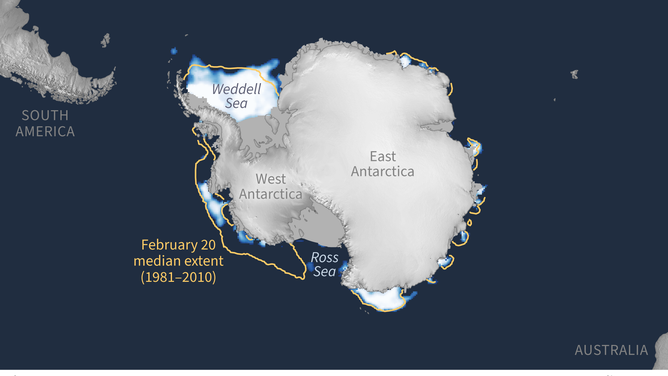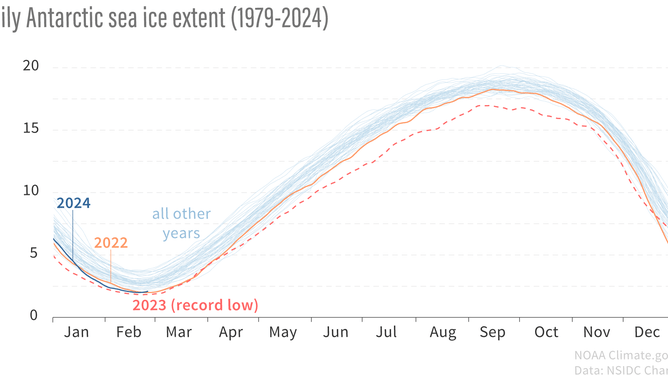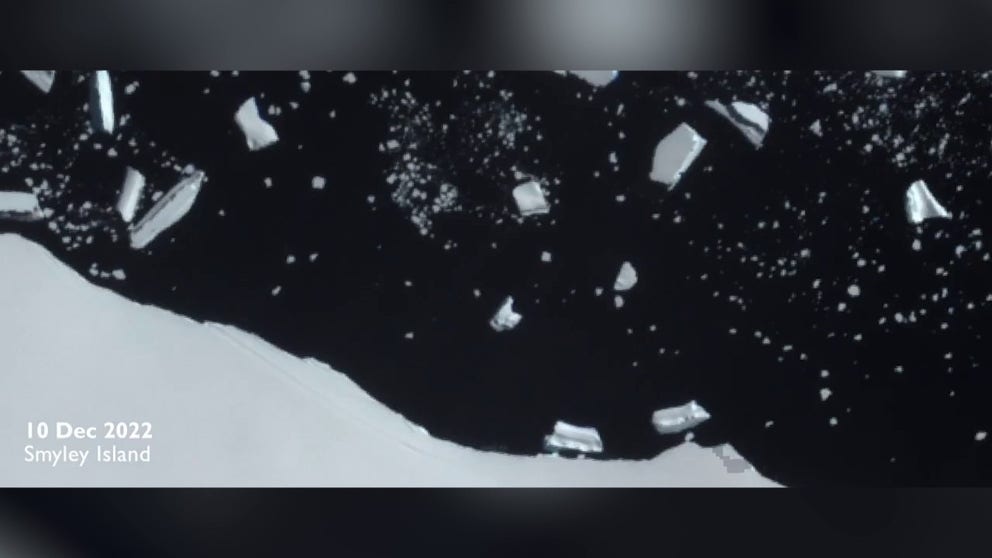Antarctic sea ice extent ties for second lowest on record
Antarctic sea ice typically reaches its minimum in February and reaches its maximum extent in September, after the Southern Hemisphere’s winter.
'Catastrophic breeding failure' of penguins caused by low sea ice in Antarctica
Record-low levels of sea ice in western Antarctica in late 2022 led to the breeding failure of four emperor penguin colonies, according to a study published on Thursday. (Courtesy: European Commission, Copernicus SENTINEL-2 via Storyful)
Scientists believe Antarctic sea ice coverage has reached its minimum extent for the year, which ties the record for the second-lowest level since 1979.
According to NOAA satellite data, sea ice surrounding Antarctica reached an annual minimum extent of 768,000 square miles on Feb. 20, 2024.
The date is fairly near when the continent reaches its minimum extent during the end of the Southern Hemisphere’s summer.
The annual downward trend has averaged an annual depreciation of around 1,800 square miles since the 1980s but reached a record minimum of 691,000 square miles just last year.
The addition of 2024 into the record books means all of the lowest five years have occurred since 2017.

Smallest Smallest Antarctic sea ice extent in 2024
(NOAA)
ANTARCTIC’S EXTREME WEATHER DRAWING MORE CRUISE SHIP EXPEDITIONS
Reduced amounts of sea ice can lead to hardships for animals, higher sea levels and extended heat waves.
In the Northern Hemisphere, the Arctic is approaching its maximum extent for 2023, which typically ends at around 6 million square miles, but the figure has not been reached in years.
In 2023, NOAA reported that ice covered 5.64 million square miles, which was the fifth-lowest level in the modern satellite era.
The maximum level is typically reached in March or April as the hemisphere transitions out of winter and into spring.
According to the agency, sea ice during the winter around the Arctic has dropped by an average of 2.8% per decade but pales in comparison to the stunning 13.5% drop during the summers.

Daily Antarctic sea ice level
(NOAA)
ANTARCTICA’S ‘DOOMSDAY GLACIER’ IS MELTING AWAY DIFFERENTLY THAN SCIENTISTS FIRST THOUGHT
Despite a strong El Niño climate pattern, which are known to produce historic global warming, neither the North Pole nor the South Pole reported record maximum or minimum levels.
Record global heat is widely expected to continue through at least 2024, which could lead to at least one more cycle of ice being exposed to record air temperatures during the upcoming summer and winter.
According to NASA, Antarctica loses about 150 billion tons of ice per year, and melting around Greenland leads to an additional 270 billion tons of ice that is lost.
